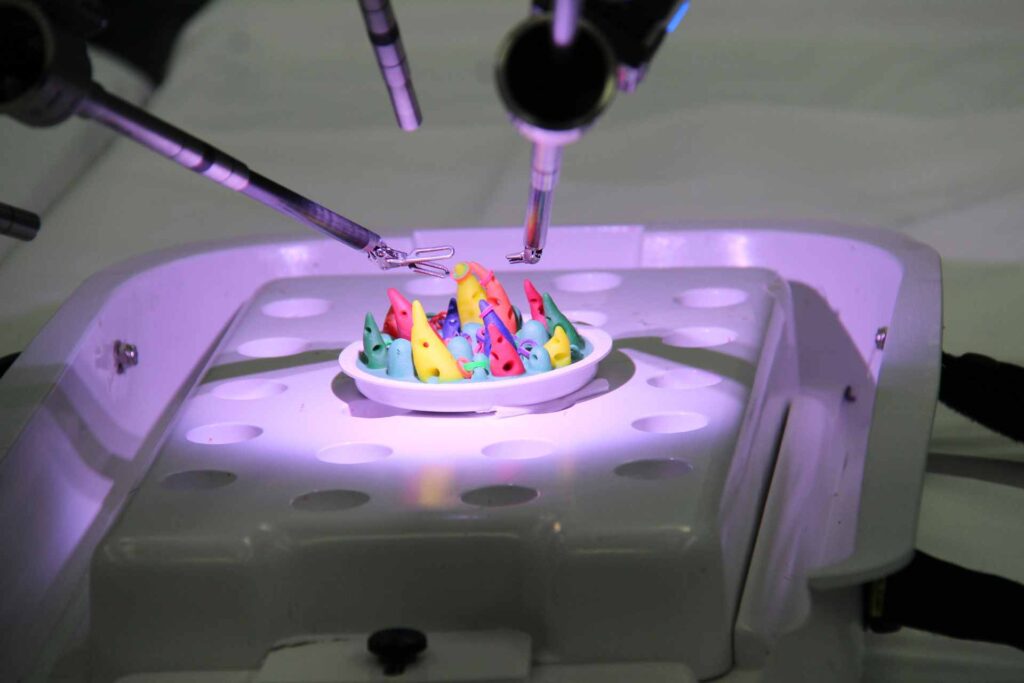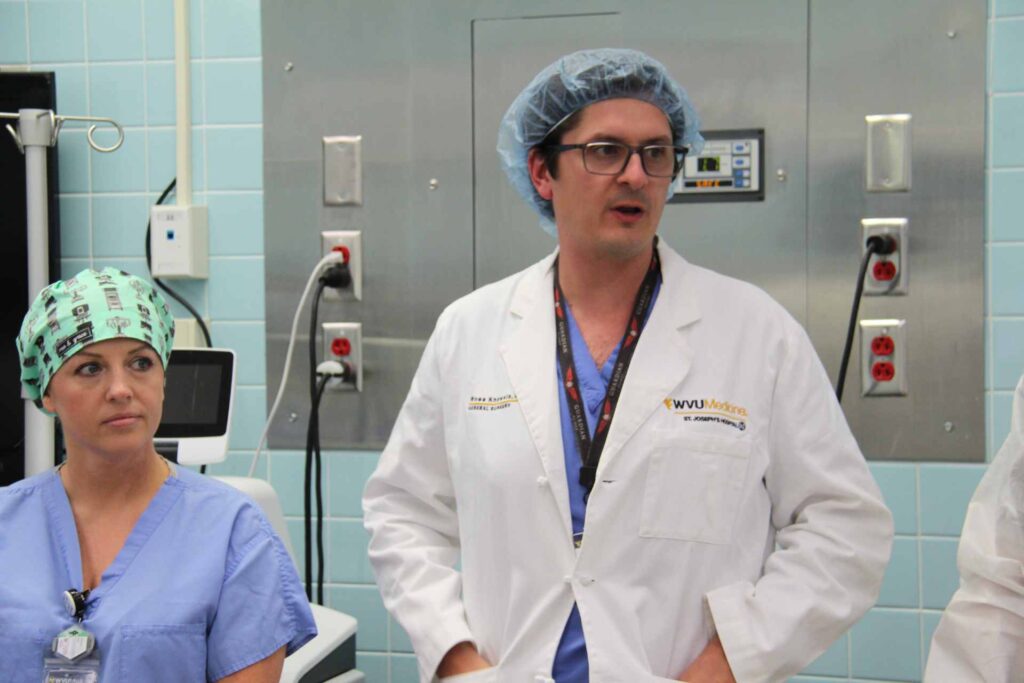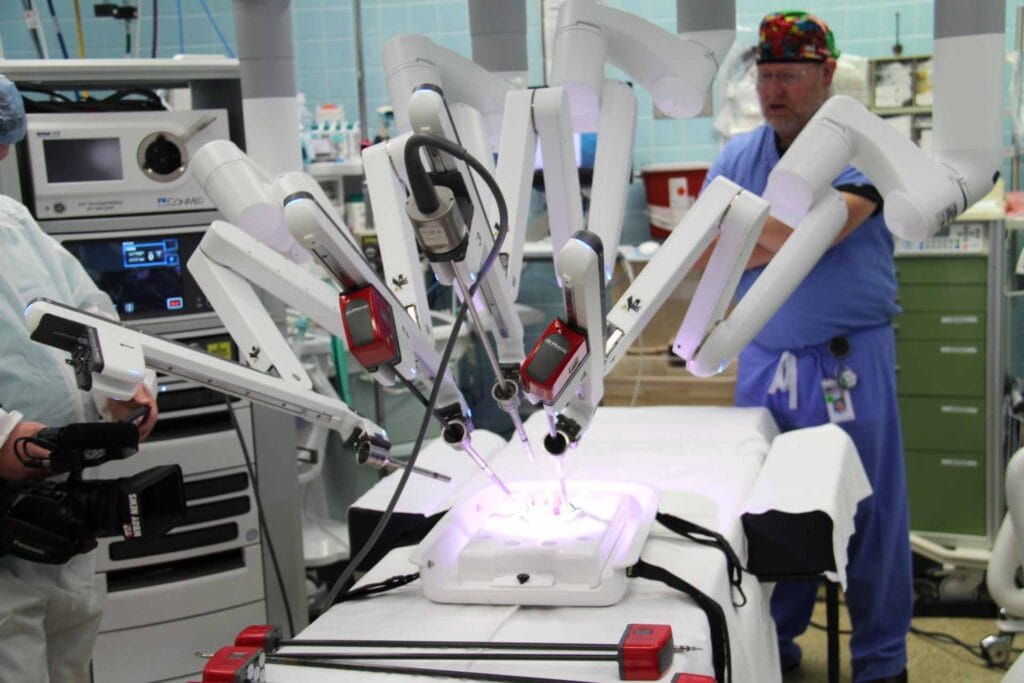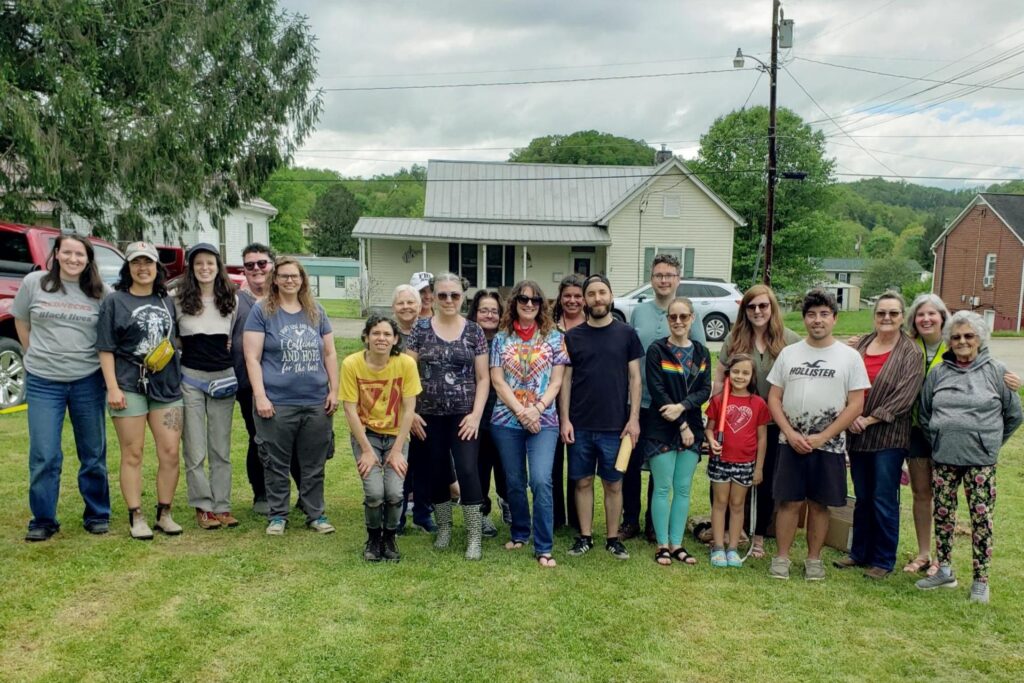BUCKHANNON – St. Joseph’s Hospital is the second Critical Access Hospital in the Mountain State to obtain the da Vinci surgical system.
Skip Gjolberg, president and CEO of St. Joseph’s Hospital, said the new surgical robot will allow the hospital’s doctors to perform surgeries in which patients will experience less pain, reduced risk of infection, less blood loss, smaller incisions, a quicker recovery time and a faster return to daily tasks.

“Offering and performing robotic surgery is something I have wanted to do for a long time, and the barrier was the cost of the robot – it’s expensive,” Gjolberg said. “At one time, it was about $1.2 million — now it may be up to $1.5 million – but the WVU Medicine System was able to have a contractual arrangement with Intuitive Surgical Operations, which allowed us to acquire one through a per-use agreement instead purchasing the whole thing.”
St. Joseph’s Hospital did purchase a robotic table designed to work in tandem with the surgical robot and a special type of sterilizer for the components that cannot go through the traditional sterilization process.
“We had to really squeeze our capital budget for last year to be able to get it all, and we had to kick the can down the road on a few things we will get this year,” Gjolberg said.
Before finalizing the agreement, Gjolberg contacted several other rural hospitals that possessed similar surgical robots.
“They said patients love it; they get better faster,” he said. “They had a lot of farmers who needed hernia repairs, and they can’t really miss that much work, but these robots allow them to get back to work very quickly versus a traditional approach. It’s less invasive, less blood loss, lower infection rates, much smaller incisional holes to get it done; it’s really cool we can do this here.”
The new system will also help recruit doctors who are already trained to use the robot.
“It is a recruiting tool for doctors because surgeons, obstetricians, gynecologists and urologists are all trained in using this in residency, so for me to try to recruit one of those types of physicians without having this tool makes it really hard,” Gjolberg said. “They learned to perform surgeries with these robots in residency, and they can probably learn traditionally, but if you are trained on a robot, you want a robot.”
General surgeon Dr. Ross Knowles, D.O., said he was trained on a similar robot in his residency.
“I trained on the robot in Massachusetts and kept hoping we would get one, and it’s finally here,” Knowles said. “This is really going to help what we can offer our patients and bring us up to the standard of care major hospitals are offering to our community, so this is a very exciting time.”
Knowles explained the robot is used for laparoscopic surgery, and the surgeon is in control of the robot the entire time.
“The laparoscopic instruments open, close, and you can spin it around, but the robot actually gives you a wrist, so you can move that entire instrument around inside, so it allows you to suture in places that you are very difficult to suture, and it also has a really high definition camera that’s almost like a 3D vision, which is really beneficial,” Knowles said.

“Also, the ergonomics with the surgeon [is a benefit],” he added. “There’s numerous surgeons who have had to have neck fusions because of the way we articulate our bodies, and you’re standing on one leg or whatever to get the job done, but when you use this, you’re sitting in a console, and you can adjust ergonomics, so the surgeon’s safety is part of it, too.”
General surgeon Susan Long, M.D., said she had performed colon surgery with a laparoscope for 26 years, and this robot will help make the process better for the surgeon and the patient.
“It takes what we already do well and makes it even better for us and for the patient because we can get into spaces that are difficult to get into with a rigid, solid instrument,” Long said. “When you can get up really close with a wrist like this, you can get into the pelvis, you can get behind the colon, you can look up and over things, and this just gives you more capability, so it takes what we already do, which is really advanced laparoscopic stuff, and makes it even better.”
Long and Knowles are the doctors currently trained on the new robot, but the hospital is looking to add more training and qualified doctors.
“We have a new obstetrician coming in August, who’s a local woman, and she’s robotically trained,” Gjolberg said. “When we were talking to her last year about coming here, I said, ‘Well, I’m going to have a robot, so that puts you up a notch or two,’ and eventually, we would like to try to get a urologist back.”
Dr. Peter Power, in obstetrics, is in the process of undergoing training to use the robot, and Dr. Kimberly Ferry, also in obstetrics, hopes to start training soon. The St. Joseph’s Hospital Foundation is also raising money to help cover costs associated with the robot.
“The foundation is raising money for the sterilization equipment because that equipment is really expensive,” Gjolberg said. “We are allocated ‘X’ number of dollars per year for the capital budget and that’s for new equipment, repairing the roof, upgrading your HVAC – those types of projects.”
St. Joseph’s Foundation 24th Annual Golf Tournament will help raise funds, and more information about donating may be found here.














